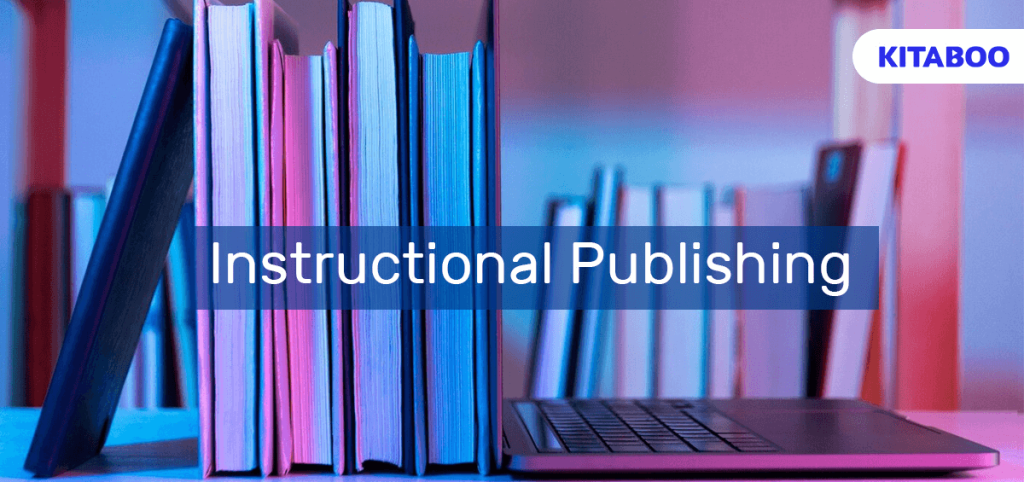
The Do’s and Don’ts of Instructional Publishing: A Comprehensive Guide
In the pre-digital era, instructional publishing was an intricate affair. Educators meticulously wrote their research, underwent strict verification, and approached publishers to feature their work in journals or books.
The dawn of the digital age has been a boon for educators, opening up a plethora of avenues to showcase their work. Today’s learners predominantly gravitate towards digital resources, making online platforms indispensable. However, even though publishing has been made simpler today, educators still uphold certain standards in their publications.
In today’s landscape, leveraging digital publication platforms like KITABOO helps educators enhance the quality of the materials and reach a wider audience.
This post will explore the essential dos and don’ts of instructional publishing in the digital era, guiding educators on how to create impactful, relevant, and quality content that resonates with today’s learners.
Table of Contents
I. Do’s and Don’ts of Instructional Publishing
II. Wrapping Up
Do’s and Don'ts of Instructional Publishing
With digital textbook platforms like KITABOO, instructional publishing has become more accessible than ever. However, educators should prioritize producing top-tier, high-standard educational material.
Here are the essential do’s and don’ts to perfect your instructional publishing endeavors.
Do's
Below are the key practices you should embrace for top-notch instructional publishing:
1. Know Your Subject
Educational material has but one aim: helping learners clear their concepts and ideas in the subject. Every educator must carefully select their areas of expertise to create an educational resource that is worth its weight.
Publications that are well-composed, researched, and supported by facts and figures can benefit the learners most.
2. Select the Right Platform
Every channel, platform, or journal has its own network where it shares its publications. As such, educators must consider the kind of outreach they wish to generate from their publication. It helps with the selection of the right digital platform (that caters to the right target audience) for publishing the works.
3. Write the Right Title and Abstract
At first glance, it may seem inconsequential to give much time to decide on a title and the abstract.
The abstract and title of your work are a window into what the learning object contains. Even if you are self-publishing the educational resource, you should provide the readers with an accurate brief of what they are signing up for.
4. Add Media
Learners today are habituated to interacting with their educational content. They expect their learning experience to have visual and audio media or at least pictorial, infographic representations of the lesson they are reading.
Educators should add plenty of media where they think it can enhance the learning value and takeaways of an educational concept. It is this aspect that makes a learning resource effective and impactful.
Don'ts
Here are the common mistakes to steer clear of in instructional publishing:
5. Overlooking the Cover Letter
This is especially relevant for educators who are seeking to get their instructional content published in journals, papers, or any other reputed resource or circulars.
Including a well-composed cover letter with educational materials drastically improves the chances of getting published in the targeted journal.
A cover letter is the sample of your educational materials, and it helps the publishers to be able to tell at a glance what your OEM is about.
6. Neglecting Peer Review
Peer reviews offer invaluable insights, helping identify and address potential shortcomings in your instructional content. It can provide feedback, critique, and a fresh perspective to develop the instructional material so that it has the best impact possible.
Even if an educator wishes to keep their ideas strictly confidential, it is important for at least one peer of trust to review the material before publishing.
7. Ignoring Co-Authorship
Co-authorship has a tremendous impact on citations. Teachers can work together with well-known educators and create eBooks and learning materials that have a rippling impact on society. It also helps get citations on the work through the added network of the established instructor, helping the teachers carve a career path for themselves.
It is also a great way to incorporate more value and insight into the learning materials that a teacher is attempting to create.
8. Neglecting Literature Review
Literature reviews are bite-sized summaries that provide the background and context to your educational material and the concepts discussed therein.
When educators reference or build upon existing scholarly works, it’s crucial to include a literature review. These concise summaries offer the necessary background, setting the stage for the content and elucidating its context.
It is more suitable for those who are creating learning materials in science, languages, or other subjects that draw from accepted scholarly publications.
9. Avoiding Innovative Content
The digital age has created the digital learner that expects their learning journey to be customizable. If there is an opportunity where educators can create interactive instructional content or AI-based adaptive learning modules, do it. Digital textbook platforms like KITABOO empower teachers today to create highly intelligent instructional modules that are personalizable by the learners to suit their learning experience. They can be published anywhere- this not only enhances engagement but also tailors the learning experience to individual needs.
Wrapping Up
The essence of instructional publishing lies in crafting impactful and enriching learning materials. Make sure you understand your target audience’s needs, preferences, and learning styles. Remember, it’s not just about disseminating information but also about making that information relatable, engaging, and easily digestible.
With digital learning tools like KITABOO, educators can seamlessly integrate interactivity, enhancing content while also offering tailored learning experiences for students. It helps you navigate the complex world of publishing with ease and precision and enables you to reach your audience more effectively.
Contact us today to learn more!
Suggested Reads:
Discover how a mobile-first training platform can help your organization.
KITABOO is a cloud-based platform to create, deliver & track mobile-first interactive training content.



